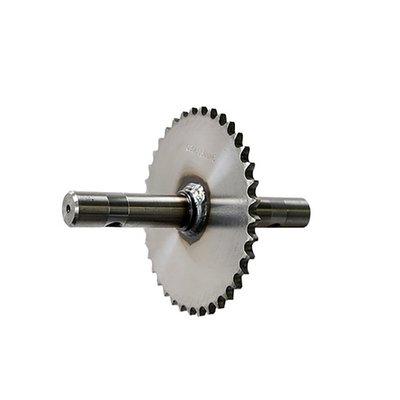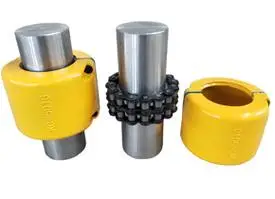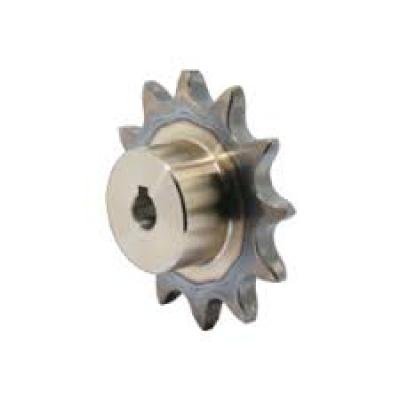Gear thermal treatment process -improve the hardness, strength and abrasion resistance of the gear
Gear thermal treatment means that by controlling the heating and cooling process of the gear within a certain temperature range, the tissue structure and performance of the gear are changed to improve the hardness, strength and abrasion resistance of the gear.The process of gear thermal treatment process will be explained at 9 points:
1. Pre -processing:
The pre -treatment of gear thermal treatment includes the preparation of gears, cleaning and removing surface impurities.
Prepare gears: Including the size and shape of the gear to meet the requirements, the necessary trimming and processing is performed to ensure the geometric shape and size accuracy of the gear.
Cleaning: Clear the oil, dust and impurities of the gear surface through the cleaning agent and solvent to ensure the quality and effect of subsequent treatment.
Eliminate surface impurities: Remove the oxidative skin, rust and dirt on the surface of the gear by pickling or polishing to ensure the uniformity and stability of the subsequent heating process.
2. Pre -heating:
Before performing the main thermal treatment, the gear needs to be pre -heated to increase the overall temperature of the gear, reduce thermal stress and temperature gradient during heating, and ensure the uniformity of the subsequent thermal treatment process.
The pre -heating temperature and time are determined according to the specific materials, gear size and thermal treatment requirements. The commonly used pre -heating temperature is 500800 ° C, and it is maintained for a period of time.
3. Heating:
Heating is the key step of gear thermal treatment. By improving the temperature of the gear, it can achieve a stage suitable for thermal treatment.
The choice of heating temperature and time depends on the specific gear materials and the required tissue structure and performance changes. Generally speaking, the commonly used heating temperature is 800950 ° C, and maintains it for a period of time to ensure that the gear reaches a uniform temperature distribution.
4. Insulation:
After heating, the gear needs to be insulated for a certain period of time to ensure the required phase change and the formation of tissue structure.
The insulation time is determined according to the specific gear materials and the required tissue structure and performance changes, generally tens of minutes to several hours.
5. Cooling:
After the insulation is completed, the gear needs to be cooling to cure the organizational structure and performance of the material.
The cooling method is selected according to the specific heat treatment requirements. Natural cooling, oil -cooled or water -cooled method can be used. The choice of cooling speed depends on the required performance requirements such as hardness and strength.
6. Quenching:
For some situations that need to improve the hardness and strength of the gear, quenching is needed. Exercise is an important step in gear thermal treatment.
The quenching is to quickly transform the gear material from high temperature to a sub -stable tissue structure by rapid cooling, which improves its hardness and strength.
The selection of quenching temperature and cooling medium is determined according to the requirements of specific materials and gears. Common media include water, oil and gas.
7. Fire:
After quenching, the gear usually becomes crispy due to excessive hardness. In order to improve its toughness and reduce the internal stress, the ignition treatment is usually required.
The ignition is to heat the gear to a proper temperature and cool it after maintaining a certain period of time to improve the organizational structure and performance.
The selection of the fire temperature and time is determined according to the requirements of specific materials and gears.
8. Post -treatment:
After the gear thermal treatment is completed, post -treatment is required, including cooling, annealing or solid -soluble treatment.
The purpose of post -treatment is to eliminate the internal stress generated during the thermal treatment, and further adjust the organizational structure and performance to achieve the required final performance.
9. Inspection and acceptance:
After completing gear thermal treatment, inspection and acceptance are performed to evaluate whether the tissue structure, hardness and strength of the gear meet the requirements.
The test method includes hardness testing, organizational observation, gold phase analysis, etc. to ensure the heat treatment effect and quality of the gear.
In summary, the process process of gear thermal treatment includes step treatment, pre -heating, heating, heating, cooling, cooling, quenching, recovery, post -processing, inspection and acceptance and other steps. The temperature and time selection of each step depends on the specific gear material and the required performance requirements. Through a reasonable thermal treatment process, the hardness, strength and abrasion resistance of the gear can be improved to ensure the life and reliability of the gear.





